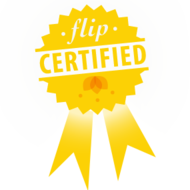This is precisely the idea behind SMART Technology's SMART Exchange. All over the nation, classrooms are equipped with interactive whiteboards and related technologies and many teachers are intimidated by these devices. I freely admit that in my first few years of student and career teaching, I had only seen a SMARTBoard one time in graduate school and I stared at it as if it were some kind of ghostly apparition. I was dumbfounded, yet intrigued.
When I began my current position, I was somewhat reluctant to embrace the SMARTBoard in my own classroom. I quietly observed while our Metacognition teacher zipped around in the SMART Notebook software with text boxes, interactive questions and timers. I experimented with some of these function on my own laptop and slowly built up my confidence.
As I walk through our building, however, it seems that many of us (myself included) are still using the SMARTBoard primarily as a way to project Word documents, webpages, videos and animations to the class, but little else. During our school-wide professional development activities, teachers are consistently asking for more training on how to use them.
Enter SMART Exchange. SMART Technologies, makers of the SMARTBoard and the accompanying Notebook software and document cameras, maintain a site for teachers to share their own Notebook creations and interactive activities. There are SMARTBoard-specific lessons using the Notebook software that are available for free download. It is a free, one-time sign-up and the site automatically sends updates via email.
While it is convenient and helpful to find lessons on the site, I found that the sample lessons were actually better for teaching me how to use the software. Go ahead and download one lesson like I did. Explore the functions in the sample. There are embedded timers, click-and-drag word banks for fill-in-the-blank questions, and jump-to tools for skipping slides.
Here are some samples of just what you can do with Notebook:
Below is a slide from a presentation about Newton's first law of motion. The "x" mark and the check can be clicked and dragged to the boxes next to each statement. Once the students have finished responding, another button reveals the correct answers.
In this drag-and-drop activity, the words in the word bank can be moved and placed on the correct blank. This slide also has a function for checking the answers, as well as an embedded timer.
The answers to the questions below have been typed in by the teacher, but they are covered with the paint tool. When a student responds, he or she can use the erase function to clear the paint and reveal the correct response.
If you experiment with these templates and master the Notebook software, I think it also important to give back to online community that supported you. The beauty of these lessons is that they are interactive, engaging, paperless and they can be saved and shared. No matter where you are on your teaching journey, you have some unique and meaningful experience to share, so jump into the digital age and get your ideas out there!












0 comments:
Post a Comment